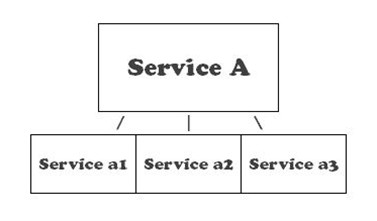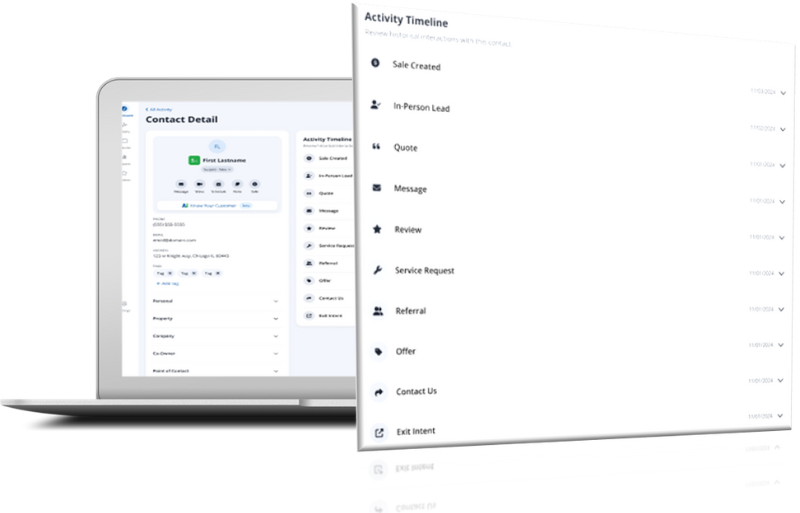14 Signs You Have a Good Website on Your Hands

Google knows what it needs in order to find, crawl, and index your website.
But do you know what it takes to play ball with Google? And really make it work for your business?
Below are 13 signs your website is on the right track when it comes to getting found on the world’s largest search engine:
1. It resembles a pyramid.
Google wants to see sites with “a clear hierarchy.” In other words, your visitors should see broad links (on your homepage) first, which gradually become more specific and specialized as they venture deeper into your site. This helps both people and search engine crawlers navigate your website more efficiently and completely.
For example, a service-oriented company should present its core services on the homepage:

If a visitor clicks through one of those services, the page they land on should present them with a more specific set of services:

And so on...
2. It has a site map page.
A site map is an outline of your website. It’s a great utility for visitors who know what they’re looking for, but don’t know how to get there. It’s also serves an invaluable SEO purpose: allowing crawlers to easily find and index your pages.
(A crawler, or bot, is a program that systematically scans the Internet for new information to index. This is how search engines like Google, Bing and Yahoo find and list your website.)
Keep in mind that while site maps are great for search engines, they’re made for humans. Therefore, if your site is large (I’m talking hundreds or even thousands of pages), it’s best to only include pages that are central to your website (i.e., don’t go all the way to the base of your website pyramid).
3. It doesn’t go overboard with the links.
Google says “keep the links on a given page to a reasonable number.”
The definitive cutoff used to be 100 links per page. Now, Google leaves it fairly open-ended because the number of links each page has leading back to it more-or-less determines the page’s link limit.
I would still cut it off at a hundred, though. Any more than that and you'll start to negatively impact user experience.
4. It’s full of useful information, relayed clearly and accurately.
Note: This is hard to do. It takes time to build something truly valuable.
A “useful, information-rich site,” as Google calls it, contains unique and original content (i.e., it hasn’t been copy/pasted from anywhere else on the web). It’s easy to navigate, easy to understand, and easy to use.
Google loves unique content because it usually benefits users – giving them a fresh perspective on the service or product (or whatever it is) they are searching for. The catch is that creating unique content that is also valuable to others requires knowledge, effort and time.
5. It’s full of relevant keywords.
Your website is only as good as the words within it. The words throughout your content tell Google what your website is about and, in turn, allow prospects to find your site when they search for it.
Your content should consist of words your customers would type into a search bar to find your company’s products or services. So think like a prospect, not a business owner, when you’re creating your site’s content. It’ll help you appear in more relevant searches.
6. It uses text instead of images to relay essential info.
Your address, your company name, your services and products – every important piece of information about your business should appear in text form on your website... not as an image.
Unless an image has an ALT tag (see below), search engine crawlers will simply breeze over it, providing zero SEO value. This is not to say you shouldn’t use images. You should. Just be cognizant of the fact that crawlers like text way more than they like pictures. It’s easier for them to understand and record.
7. It has quality titles and ALT tags.
A “title” is the first line of a search engine result (see below):

It should be page-specific (i.e., if your website is about remodeling, the page should have a title with the word “remodeling” in it). It should also be written clearly and concisely, the way good copy is. A title is like the headline of an article – it’s the first thing people see. A good one will entice people to click through to your site.
An “ALT tag,” in so many words, explains an image. It helps search engines interpret what an image is about, which provides great SEO value. Just don’t overload your ALT tags with keywords. This is called stuffing and goes against Google’s guidelines.
8. It doesn’t have broken links or incorrect HTML.
Broken links, in addition to being frustrating, are a staple of poorly maintained websites. Check your site daily, weekly or monthly – depending on its size – to ensure your links take people where you intend them to. Otherwise you’ll annoy your visitors, or worse yet, lose their trust.
Incorrect HTML will likely prevent crawlers from indexing your web pages. It can also cause slower load times, which will shoot your bounce rate (i.e., the rate at which visitors leave your site) through the roof.
To see if your HTML is correct, go to validator.w3.org and search your web address.
9. It has dynamic pages Google can crawl.
Unlike static pages, which remain constant, dynamic pages are always changing. For example, a simple dynamic page might display the date and time. A more complex dynamic page would have to access database information to display unique, user-specific info. A dynamic page typically contains a “?” character in the URL. It is also more difficult and time-consuming for search engines to crawl.
A good way to ensure your dynamic pages are Google-friendly is to limit the number of parameters (i.e., what goes after “.com”) in your URL.
10. It supports If-Modified-Since.
The If-Modified-Since HTTP header lets the search engine spider know whether a webpage has been changed since its last indexing. This feature exists because re-indexing pages that haven’t changed – when there are literally billions of pages that have changed – is an incredible waste of time and resources for search engines.
If-Modified-Since will also save you bandwidth (which is used up when crawlers do their thing). And, because it helps expedite the indexing process, your pages will appear in the search engine results faster.
11. It uses the robots.txt files correctly.
Website owners use robots.txt files to tell crawlers which pages they’re allowed to index. Taking advantage of this functionality is important because search engines aren’t the only entities capable of crawling the Internet. In fact, anyone with the proper coding knowledge can create a program that scrapes the Internet for data (e.g., email addresses, phone numbers) that they can then use for their own purposes.
If you know where that information is located within your website, you can use robots.txt to control what gets picked up. Just make sure it’s done correctly. You wouldn’t want to accidently block your entire website.
12. It only allows valuable pages to be indexed.
According to Google, you can “use robots.txt to prevent the crawling of search results pages or other auto-generated pages that don’t add much value for users coming from search engines.” In other words, you should use robots.txt to hide pages that’ll do nothing more than frustrate and annoy visitors.
Google’s goal is to organize the Internet’s information and present it in order from most to least valuable. Muddling the results with unoriginal web pages only serves to derail this goal. It makes Google angry. And then Google eats you.
Don’t get eaten by Google. Only show it pages that are unique, useful and, ultimately, valuable.
13. It displays correctly across several different browsers.
Your website should display correctly on Chrome, Firefox and Safari. If it doesn’t, you’re missing an incredible amount of traffic.
And if your website doesn’t display correctly (or optimally) on any device, then you’re missing an incredible number of leads.
14. It’s fast.
Creating a website that loads each page in under three seconds requires a fairly technical set of skills. You need to know how to:
- avoid CSS expressions,
- reduce DNS lookups,
- remove duplicate scripts,
- configure ETags and a dozen other things.
If you don’t have the technical knowledge, it’s best to consult a professional.
Knowing why speed is important, however, can help you create an experience your prospects will enjoy. Your visitors will appreciate a blazing-fast site. Of course, they’ll also appreciate a site that’s informative and easy to navigate – one with clear contact info, a convenient quote form, and a defined main navigation.
It’s all about convenience. Give it to your prospects and, in turn, they’ll trust and do business with you.
Are there any other tell-tale signs a website will be successful? Share them in the comments below.
For more on how to create a successful website that generates a consistent flow of leads, give us a call or click here!








